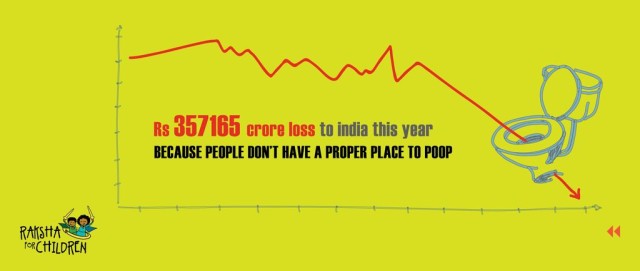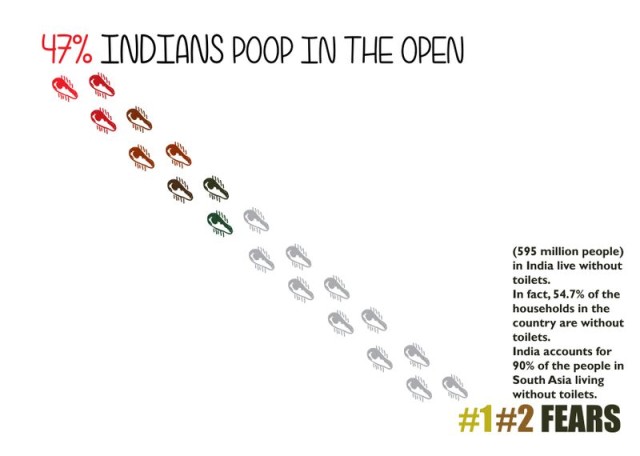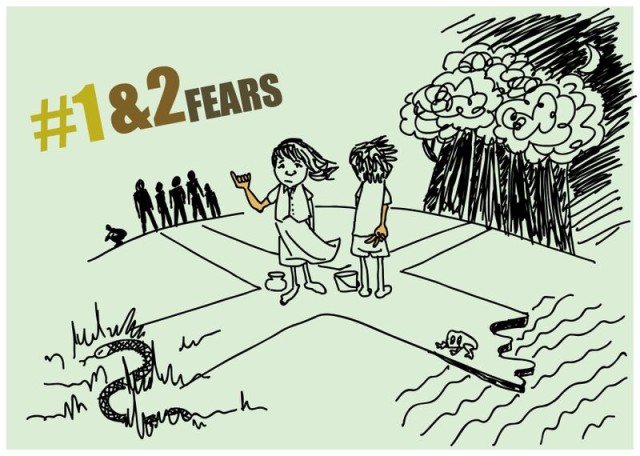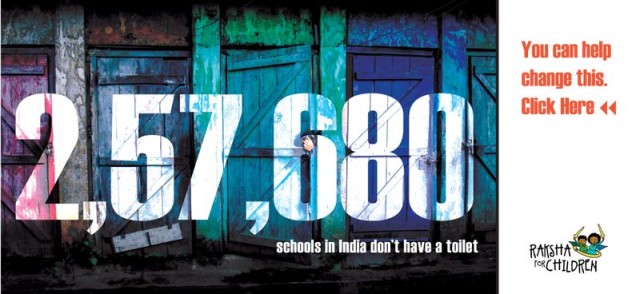 Chennai, 17th November 2015: “On our way to the fields to relieve ourselves, the boys taunt us and pass vulgar comments. It is not nice to hear those things. But we just keep walking without confronting the boys. Then have to wait for them to leave, before using the field to relieve ourselves,” says Poonam Kumari, a 13-year-old from Ghazipur, U.P. As another World Toilet Day is observed on November 19th, India needs to remind itself of the long road ahead.
Chennai, 17th November 2015: “On our way to the fields to relieve ourselves, the boys taunt us and pass vulgar comments. It is not nice to hear those things. But we just keep walking without confronting the boys. Then have to wait for them to leave, before using the field to relieve ourselves,” says Poonam Kumari, a 13-year-old from Ghazipur, U.P. As another World Toilet Day is observed on November 19th, India needs to remind itself of the long road ahead.
The popular – but true – line “India has more mobile phone users than toilets” did intensify India’s efforts in addressing open defecation, with the Swach Bharat Mission being the highlight. The massive initiative launched in full spotlight did create a significant impact in terms of sheer numbers. Close to 90 lakh individual household latrines were constructed in the last year. 3.17 lakh toilets have been built in schools, a remarkable improvement in the state of affairs.
However, there is still a long way to go. The functionality and maintenance of these toilets need to be improved, and monitoring the behaviour change among the target populations is mandatory. In many locations, like Rajasthan’s Bikaner, the newly-made toilets are not used – due to reasons ranging from absence of behavioural change to lack of storage space for household materials. More than mere construction of toilets, their usage is what is critical in collectively achieving the stated objectives of the Swach Bharat Mission.
Concerted and collaborative initiatives of the government with communities, NGOs, corporate partners and the civil society have yielded significant results in this ambitious project. Through Community-led Total Sanitation (CLTS), more than 3000 household toilets have been facilitated by World Vision India, an NGO in some of the hard-to-reach locations with least facilities. “Creating awareness about the ill-effects of open defecation and ensuring access to toilets is decisive. It is imperative that better coordination among governing bodies in a bottom-up approach, comprehensive and mulit-dimensional budgetary allocations and a thorough understanding of grassroot realities are ensured,” says Reni Jacob, Director – Advocacy, World Vision India.
Infrastructure coupled with consistent behaviour change communication for children in anganwadis and schools and through mothers groups have improved the health status of children. Schools have also witnessed increased enrolment and attendance after the launch of the World Vision India’s Support My School campaign with partners, an effort to address the issue of children dropping out of government schools due to lack of access to toilets and infrastructure requirements. Toilets are critical to development, not only from a health and sanitation point of view, but also from the perspective of safety and dignity of the girl child, continuity of education and economic progress.







World Vision India is a Christian grassroots humanitarian organisation that serves all people regardless of religion, caste, race, ethnicity or gender. Through development, relief and advocacy, we strive/seek to create lasting change in the lives of children, their families and communities living in contexts of poverty and injustice. World Vision works in nearly 100 countries worldwide, and we have been in India since 1962. Today we work in over 6200 urban, rural and tribal communities spread over 163 districts across 26 states impacting the lives of 26 lakh children.
